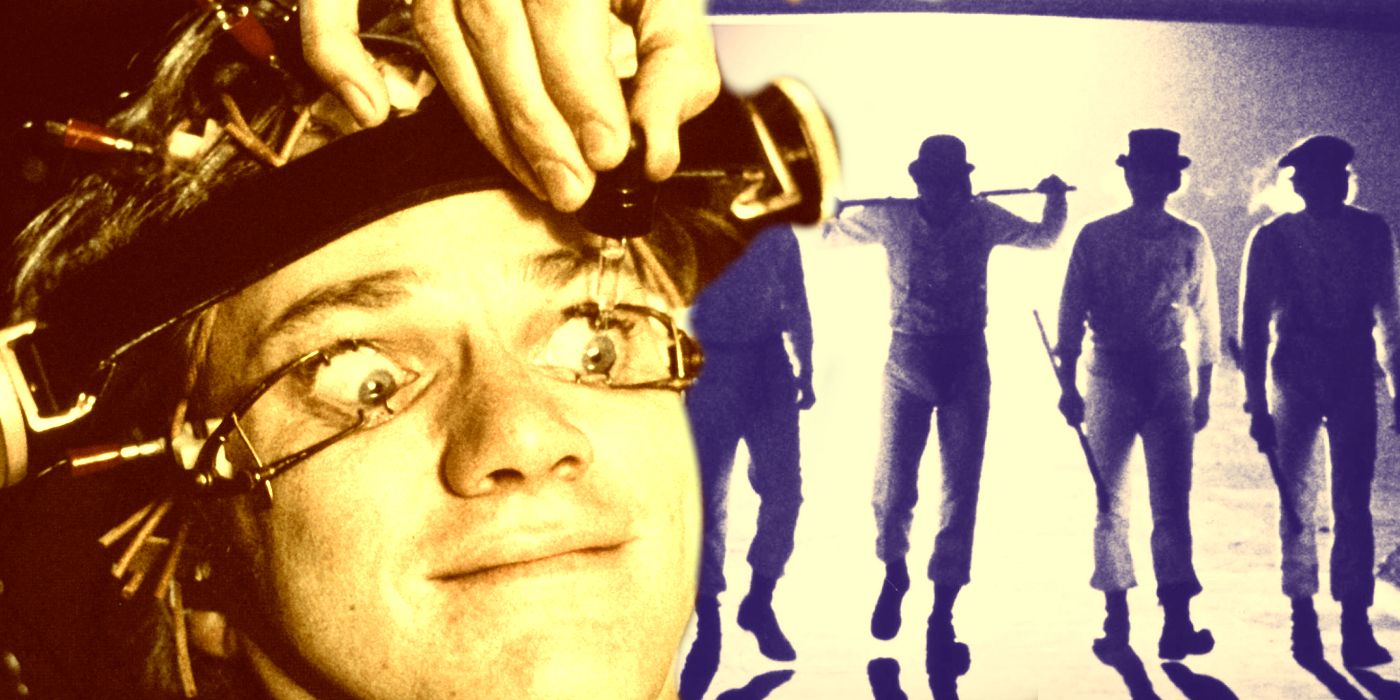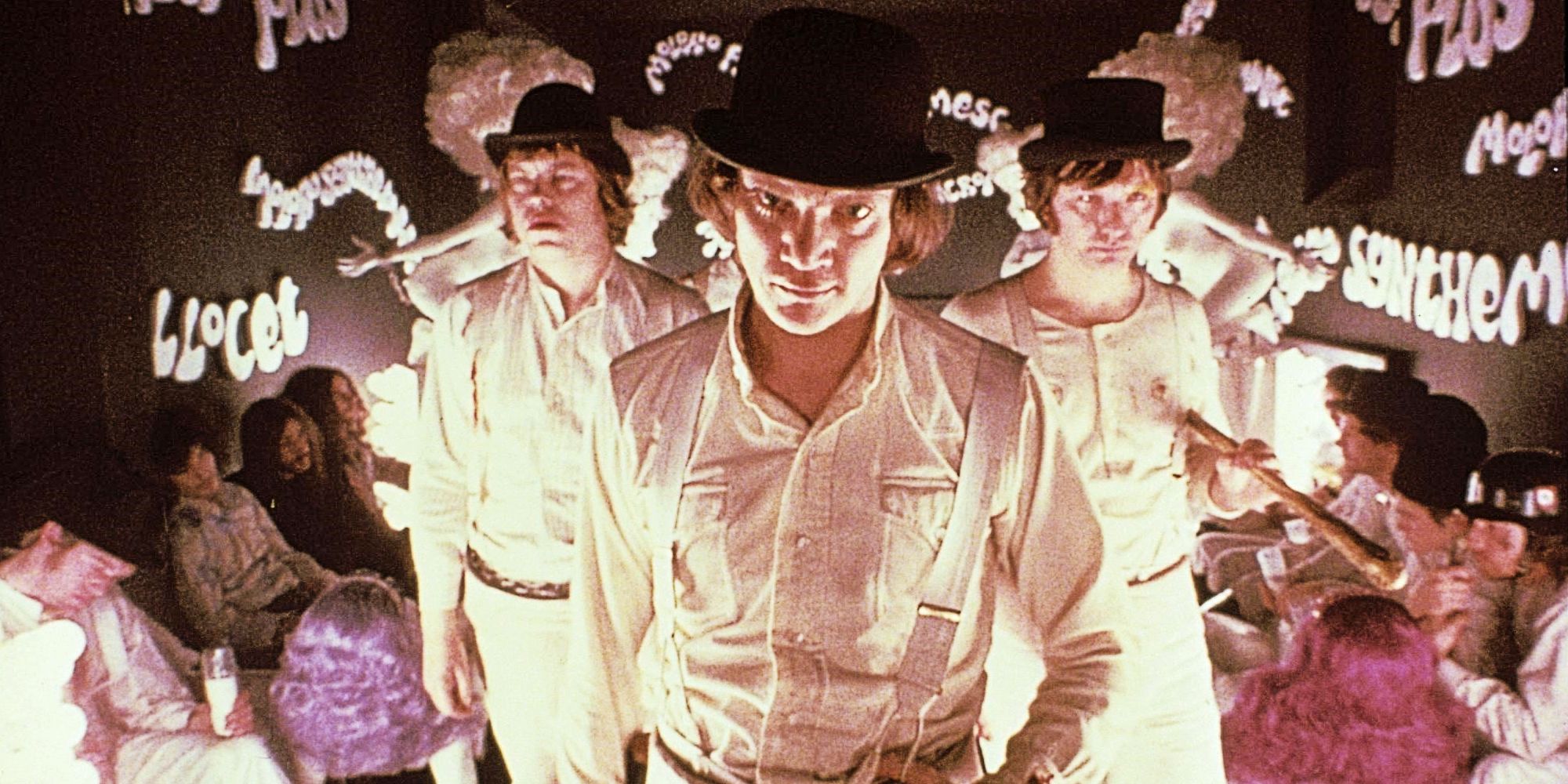The classic adaptation A Clockwork Orange was incredibly controversial upon release, but there is a good reason that the movie was banned so often and censored for so long. Based on the 1962 novel of the same name by author Anthony Burgess, A Clockwork Orange was a deeply divisive 1971 crime movie. Set in the near future, the dystopian sci-fi depicted the life and crimes of Alex DeLarge, an unrepentant thief, murderer, and rapist who is subjected to experimental therapies to curb his violent urges after being caught. It was partly the no-holds-barred depiction of this behavior that earned the movie such a notorious reputation.
Like the soon-to-be-rebooted Texas Chainsaw Massacre, The Exorcist, and Straw Dogs, A Clockwork Orange was one of several frequently banned, censored, and otherwise challenged movies released in the early ‘70s. Like those three releases, Kubrick’s adaptation is often lauded as a thoughtful satire and effective character study by its defenders. However, A Clockwork Orange has also been called amoral, offensive, and even dangerous in the years since its release.
It is not difficult to imagine why A Clockwork Orange was met with scandal and controversy upon its release. The story features numerous scenes of extreme violence and depravity both on and offscreen, chief among them rape and later murder committed by Alex and a brutal beating committed by his gang. As Alex is a teenager in A Clockwork Orange’s movie adaptation (and younger in the source novel), the scenes are deeply upsetting, but the movie’s outsized success means that it has remained more enduringly acclaimed than similarly shocking releases such as Henry: Portrait of a Serial Killer and The Great Ecstasy of Robert Carmichael. The reason for this, and the banning and frequent censorship of A Clockwork Orange, is likely due to its uncompromising ideological viewpoint.
A Clockwork Orange depicts Alex’s actions as repugnant and leaves viewers rooting for the monstrous protagonist to be punished or redeemed in some way, but proceeds to offer no answer through psychological intervention, social reintegration, or other means. In the source novel, Alex finds God and finally repents, but like Kubrick’s darker take on Stephen King’s The Shining, the book's movie adaptation opts to leave out this redemptive arc. Instead, A Clockwork Orange depicts Alex’s horrific crimes in lurid detail, then shows that his supposed saviors are as amoral and power-mad as he is, and eventually even portrays one of his victims as a callous, cruel villain. The fact that Alex’s former friends are even more violent as police officers than they were as delinquents means the movie finds no hope in the law, as well as dismissing behavioral modification, civil recovery, and other proposed answers to social ills.
As well as being withdrawn from circulation in Britain at Kubrick’s request, A Clockwork Orange was banned in Ireland from 1971 until 2000. The movie was banned in Singapore for 40 years, eventually being shown in 2011. Kubrick’s adaptation was also banned in Spain during Franco’s dictatorship and in South Africa during the apartheid regime although, as evidenced by the impact of his influential Stephen King adaptation The Shining, Kubrick’s career continued to flourish regardless. Although no longer banned in most countries, A Clockwork Orange remains a controversial and frequently challenged movie to this day due to its shocking content and the uncompromising way in which its challenging themes are portrayed.


